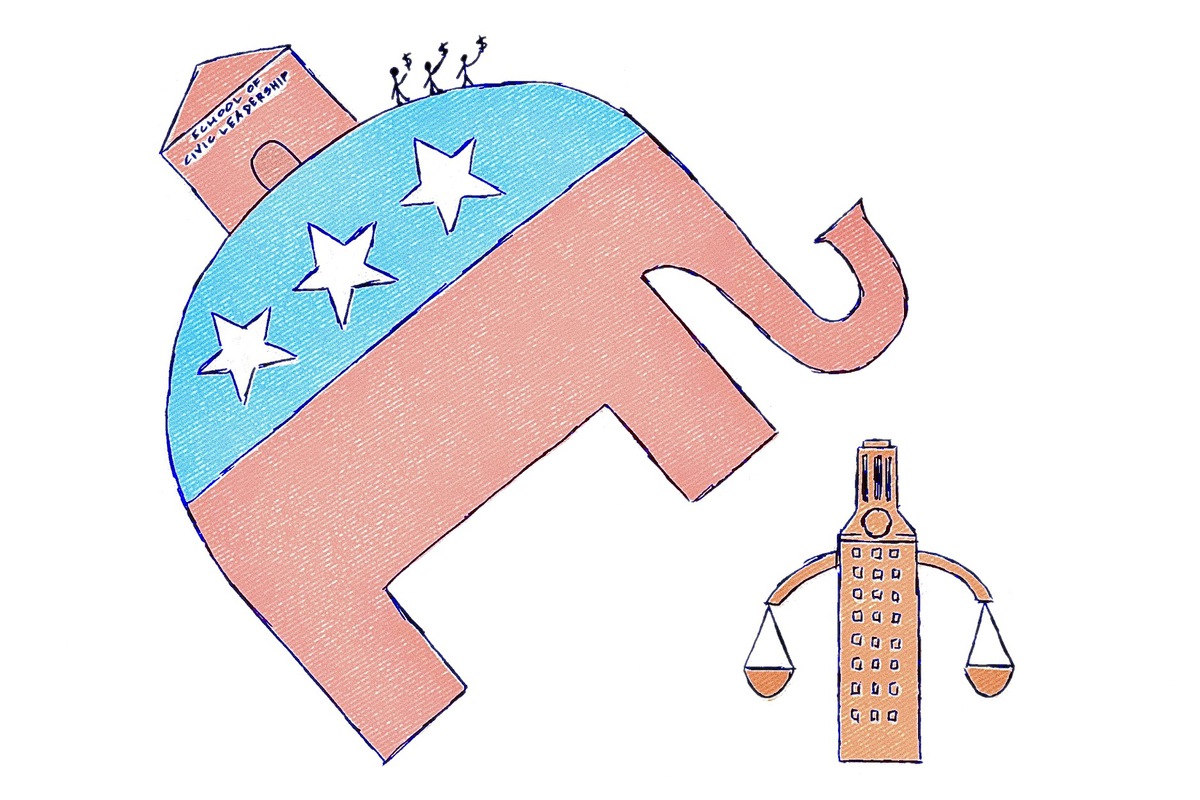Every day, labs in the University of Texas System produce low-level radioactive waste in the course of medical procedures and scientific research. Despite what the comic books would have you believe, this radioactive waste isn’t fluorescent green glowing sludge. Most of the waste the UT System produces consists of objects like gloves, protective clothing and laboratory glassware that have been exposed to radiation during routine research or medical protocols. Roughly 90 percent of this low-level radioactive waste can be safely contained on-site at the UT System labs that produce them. But what happens to the other 10 percent of toxic trash raises concerns.
In 1980, the federal Low Level Radioactive Waste (LLRW) Policy Act made each state responsible for disposing of all the LLRW produced within its borders. Only four LLRW disposal facilities, which dispose of waste by burying it in controlled shallow land, exist in the U.S. All 50 states depend on these four facilities to dispose of their radioactive waste, and until 2008, Texas disposed of its LLRW in South Carolina. But when that facility closed its doors, Texas was forced to look into other options.
Enter Waste Control Specialists LLC, the private vendors who recently built a new disposal facility in Andrews County in West Texas. Licensed by the Texas Commission on Environmental Quality and established as part of a “compact” with the state of Vermont, the facility accepts waste from Texas, Vermont and the federal government. It accepted its first shipments of radioactive waste last April. According to Chuck McDonald, a spokesperson for Waste Control Specialists, both the UT and A&M Systems have requested direct contracts with WCS. In a Sept. 26 meeting of the Texas House Committee on Environmental Regulation, he testified that these contracts were about to be finalized. (Full disclosure: I serve as an unpaid intern in State Senator Wendy Davis’s office, but these opinions are my own and not hers or her staff’s.)
Disposing of LLRW is expensive, but luckily the UT System produces very little of it — only 10 to 20 drums per year. Under contracts that fix the prices charged by WCS, the approximate cost to dispose of one 55-gallon drum of waste material is $2,000, meaning that the UT System will spend no more than $40,000 dollars on LLRW disposal each year. The problem with WCS isn’t financial — it’s environmental.
WCS is run by Dallas businessman Harold Simmons, who persuaded the Commission to allow him to put up stock of Titanium Metals Corporation, a company he owns, as security on the facility. So if anything monumental goes wrong with the Andrews facility, stock in WCS’s sister company will be given to the state for damages. As the Texas Observer reported, radioactive waste disposal facilities are typically secured with a bond, a letter of credit or insurance. Securing one with stocks, let alone stocks so strongly tied to the operator of the facility, is near unheard of. It’s as if Simmons convinced a bank to give him a line of credit by using another line of credit as collateral. It just doesn’t make sense.
In the same Sept. 26 committee meeting, State Representative Lon Burnam interrogated McDonald about whether or not the disposal routes used by WCS to transport the waste met federal and state safety standards. McDonalds responded that he could not speak to that specifically because he was not aware of the routes. McDonald also said that WCS ensures the financial stability of WCS by moving around the stocks in the security every single day. Maybe that’s worked so far to keep the company financially secure, but that’s not the point. The point is that the state agency that’s supposed to be regulating WCS is allowing it to secure the high-risk venture with stock in a sister company. That hardly seems like regulation at all. And if the Commission can’t stand up to Simmons on something as blatantly fishy as securing his company with stock in his other company, then how will they stand up to him on the more serious issues that have been raised about the facility’s environmental impact — issues like ground water contamination and safe transportation of LLRW? It’s not hard to imagine that they won’t.
Wright is Plan II and biology junior from San Antonio.




















